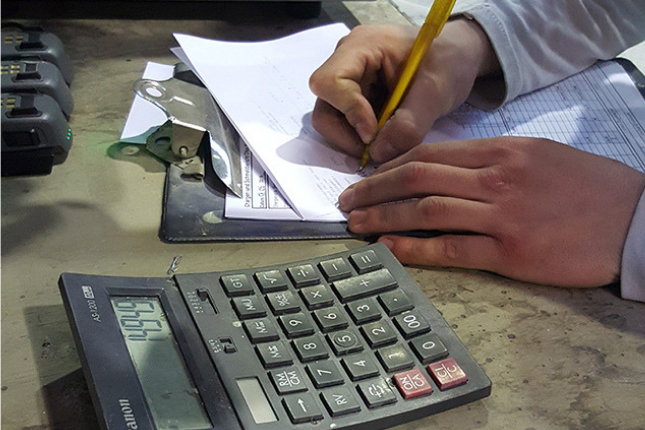To produce a sound casting in a foundry, the melt must have the right composition of specified grade metallic and non-metallic elements. Good foundry practices, including careful melt preparation and mould design, can help to avoid defects. However, depending on the source materials (raw material, sorted scrap or leftovers from previous melts) a procedure to refine or correct the composition might be inevitable. Automating this process with charge correction software for OES analysis can offer an incredibly powerful tool for the foundry process.
The problem with melt correction is that it can be a metallurgically complex and time-consuming process. In an industry that’s always looking for savings in energy and material costs and ways to work more efficiently and safely, the manual process of charge correction can cause serious disruption.
Previously, the charge correction process involved using a pocket calculator to complete complex calculations. This is not only a lengthy process, but one that is prone to human error.

Hitachi High-Tech has automated the charge correction process with a cutting-edge software solution, so calculations now take only a matter of seconds. But the software doesn’t just save melting time; it can bring a range of other benefits to foundries.
Our Adjcalc software combined with the highly intuitive Hitachi SpArcfire operating system, a foundry can automate the main aspects of melt correction. As soon as a Hitachi OES analyzer shows that the material in the production process has not met the specification, the software can automatically calculate the adjustments needed and recommend a plan of action.
No more calculators and no more excel spreadsheets. Just quick, precise analysis and clear instructions on how to correct the composition of the melt. By accessing the Hitachi High-Tech GRADE Database which has up-to-date data on over 350,000 metal grades, your OES can automatically compare the analysis with the grade specs to ensure your charge corrections get the best results as fast as possible to guarantee melt quality. We offer a free 60-day trial of the GRADE Database.
As well as making all the necessary calculations in a matter of seconds, Adjcalc can help reduce the costs of the charge correction process.
The software calculates and selects the most efficient and cheapest combination of source materials needed to achieve the desired melt specification. This might help you to make better use of your scrap rather than buying in expensive raw materials.
The complexity of manual charge correction calculations leads to significant potential for human error. When dealing with extremely fine margins in a high-volume environment, the smallest error in calculation can create a huge amount of disruption.
By allowing software to handle this part of the process, operators can dramatically reduce the number of charge correction errors. And balancing all the elements in a metal, as opposed to just one, reduces the potential for needing further costly rounds of corrections.
The software is so intuitive and easy to use that years of technical expertise in metallurgy is no longer required to perform a melt correction. One of the goals for our software is to allow even the most technical processes to be completed in a few simple steps. With charge correction no longer a disruptive process demanding significant staff resources, process efficiency and productivity are much easier to maintain.
By combining Adjcalc software with SpArcfire, foundries can take the complexity and uncertainty out of charge correction and ensure materials are produced to the right specification. At Hitachi High-Tech we have been creating solutions that allow foundries to get the best results in the safest and most efficient way possible for over four decades. Harnessing the power of software is the next exciting step for many metal production companies across the world.
For more information on supporting software and how to achieve optimal melt control with OES analysis we offer guides for cast iron and non-ferrous casting.
Download the guide for cast iron melt control Download the guide for non-ferrous casting melt control